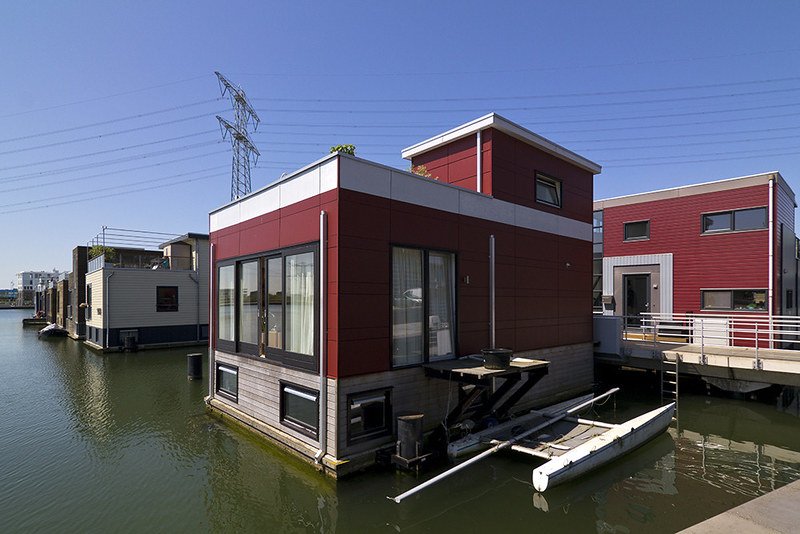For cities that are situated on the coast or a big body of water, flooding is an immense issue that can do extensive property damage. So, forward planners have come up with an innovative home design: houses that that can rise and fall as and when water levels rise without getting damaged.
Schoonschip in Amsterdam, Netherlands (which is 90% below sea level) is one such community on the River IJ, with floating houses built to reduce the effects of flooding as an indirect result of climate change. The city of Rotterdam is also home to the largest floating office building.

Picture: Wojtek Gurak/Flickr Commons
Waterstudio, one of the leading architect firms at the forefront of creating floating communities, say that floating developments also can make a positive impact on slum communities that are living in conjunction with water. ‘There are many communities all over the world that are threatened by rising sea levels, and Waterstudio seeks to shed light on people that are currently living without the most fundamental of necessities,’ the website reads.
Floating homes are different to houseboats, as they are fixed to the shore and are connected to their local sewer system and power grid. They resemble traditional houses in most ways, but they have a concrete hull that acts as a counterweight that allows for stability in water. They are also stabilised by steel pillars and shock-absorbent materials, around which the houses float up and down without drifting away as water levels rise or recede.
Watch more about Schoonschip below:
The Dutch government wants to build more floating houses, encouraging residents to get on board. ‘The municipality wants to expand the concept of floating because it is multifunctional use of space for housing, and because the sustainable way is the way forward,’ Nienke van Renssen, an Amsterdam city councillor from the GreenLeft party told Atlas Obscura.
Though several other countries around the world have built houses on water, they are usually elevated on stilts but are immovable. Many Asian countries including Cambodia and Vietnam have built communities on the water for years, but they are not completely immune to flooding. Another country that has a similar concept to the modern floating homes in the Netherlands is the UK, where ‘amphibious’ houses on the River Thames that also rise with water levels.
Picture: Unsplash
ALSO READ
Could mechanical trees stop global warming before it’s too late?


















